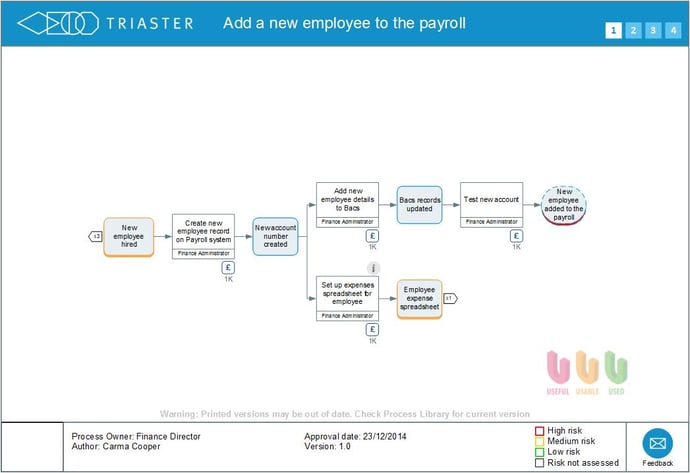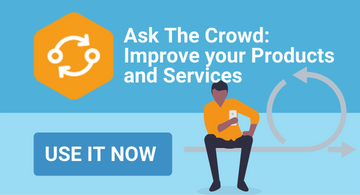Change Management and Continuous Improvement are sometimes used interchangeably to describe transformational changes to a business or its way of working. However, these terms are focused on very different change strategies, and the method you choose will depend on how you want the changes to be made and how much of a cultural upheaval your organisation can tolerate. Often a combination of these two is the best approach.
This article explores the following. Please do feel free to skip straight to the section which interests you the most.- What is Change Management?
- What Makes Organisational Change Management Successful?
- What is Continuous Improvement?
- Successful Continuous Improvement Tools
- Which Strategy is Best for Your Business?

Let's start by looking at...
What is Change Management?
Change management is a structured approach that seeks to ensure that any changes made to a business, are implemented correctly and that the ongoing benefits of a particular change are achieved over time. Change management usually looks at the wider aspects of business transformation; the individuals and teams within a company and how they can migrate to a new way of doing things with little impact on their day-to-day activities.
It is also more focused on the big changes that occur within a business and those that are more likely to face resistance. Some examples include:
- Mergers and Acquisitions
- Business restructure
- Changes to the business model
- Major changes to the way things are done
- Entering new markets

What Makes Organisational Change Management Successful?
As organisational change management strategies typically look at the people within the organisation, you can expect most of the key steps of managing change to be focused on them. A typical change management strategy will cover the following points:
- Sponsorship – Making sure that you have sponsorship for a project at a senior executive level. Without this, it is very unlikely that your project will get off the ground.
- Buy-In – Possibly one of the most difficult objectives to achieve. You must make sure that you have buy-in, not only from your senior stakeholders but also from the people who will be directly affected by the proposed changes.
- Involvement – Getting the right people involved from the very start is key to the success of your change management project. This will ensure that everything runs smoothly and the impact on the business remains relatively low.
- Impact – Before you begin implementing changes you will need to consider the impact that they will have on the people in your business. It is likely that your colleagues will raise their concerns so you will need to make sure that these are properly addressed.
- Communication – Communication is king, and you must make sure that the people who are directly affected by the changes are kept informed throughout the process.
- Readiness – Another key point. You will need to make sure that once your changes have been proposed, the people in your business will need to be ready to accept and implement them. This could be through training or raising awareness of your change project.
What are the Pros of Implementing a Change Management Strategy?
If change management is done well, then the impact on the people and business as whole will be very low, and it will take significantly less time to return to business as usual. Other benefits of a successful change management implementation include:
- Increased employee engagement
- Increased productivity
- Reduced stress among employees
- Reduced resistance to future changes
What are the Cons of Implementing a Change Management Strategy?
If a change management implementation is unsuccessful, then it is likely that your transformation plans will fall through and the proposed changes will not be implemented successfully, if at all. Other issues that may arise as a result of poor change management practices include:
- Increased staff turnover
- Reduced productivity
- Potential damage to brand reputation
- Becoming a ‘this is how we’ve always done things’ business
What is Continuous Improvement?
Continuous improvement is an ongoing, long-term approach to improve processes, products and services. In contrast to change management, continuous improvement occurs gradually and aims to make small incremental changes over time. However it is important to note that continuous improvement projects can also become part of a larger change management initiative. Generally speaking, continuous improvement looks to change and improve business processes to increase efficiency and reduce costs. As the majority of changes are small, there is often less resistance and take-up is greatly improved.

Some examples of how continuous improvement can be used include:
- Improve existing business processes
- Find and reduce risks
- Reduce costs
- Increase efficiency
- Improve business performance
You can read more about this in the article: What is Continuous Improvement? A Simple Guide
Successful Continuous Improvement Tools
Process Mapping
For medium to large organisations or ones of any complexity, a great way to start Continuous Improvement is by process mapping. You can read more about this here: Process Mapping: Who does it and why.

Business Process Management
Once captured, business processes must be shared with your whole organisation via a Business Process Management system. Just capturing and sharing your business processes encourages people to come up with ideas about how to improve them. In fact, when starting to process map it is often difficult to focus people on capturing what is currently done, as they immediately start to come up with good ideas on how to improve them.
Improvement Roadmaps
Whether or not you take a process mapping approach to Continuous Improvement, improvement ideas must be captured - from all stakeholders and interested parties - in an improvement or change roadmap. This enables ideas to be group together by topic and prioritised according to your corporate goals. Then as part of business as usual the top priority improvement ideas are gradually and continually implemented.
What are the Pros of Implementing a Continuous Improvement Strategy?
There are many benefits of implementing continuous improvement in your organisation. Gaining an overview of all your business processes can be one, as is reducing costs and increasing efficiency but also:
- Improving quality
- Increasing productivity
- Reducing risks
- Increasing profitability
- Working towards your corporate goals
What are the Cons of Implementing a Continuous Improvement Strategy?
There aren’t many limitations to implementing continuous improvement providing it is done properly and becomes part of the culture in your organisation. However, there are several factors that may lead to problems when getting your project off the ground, some examples include:
- Lack of leadership and management support
- Inability to get buy-in
- Lack of employee engagement
- Problems with getting employees to follow new or existing processes
- Reduced take-up
Of course all of these can be reduced or eliminated by supporting its implementation with a change management approach.
Which Strategy is Best for Your Business?
Which strategy you choose, will ultimately depend on the unique goals and objectives of your business, however Triaster's experience is that, adopting a continuous improvement approach and supporting its implementation through change management seems to be the most effective way to make improvements in your business.
Ask The Crowd
Whichever way you plan to move forward, you will definitely need an Improvement Roadmap. Triaster's Ask The Crowd is a software tool that is designed to capture everyone's ideas and prioritisation views to enable you to build the best possible change roadmap that everyone can get behind. Sign up for a free 14 day trial now.
Related Articles:
What is Continuous Improvement? A Simple Guide
Process Mapping: Who does it and why?
How to Build a Continuous Improvement Roadmap: a Practical Guide
Related White Papers:
The Complete Guide to Continuous Improvement in Business
This is an updated and refreshed version of an article originally written in 2017.
Written by Michael Cousins
Mike founded Triaster in 1994. A thought leader in business improvement, he has led Triaster ever since, spearheading its development of beautifully engineered business improvement software, that is both full of the functionality required by business analysts and that end users find really easy to use.





